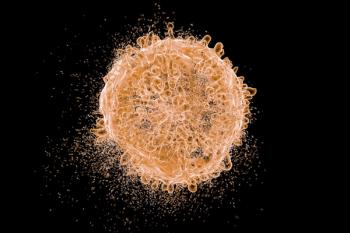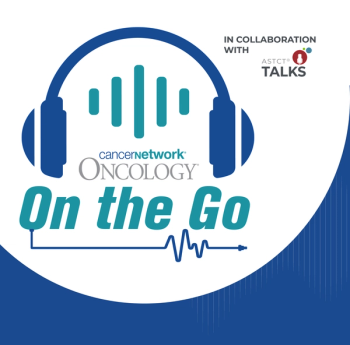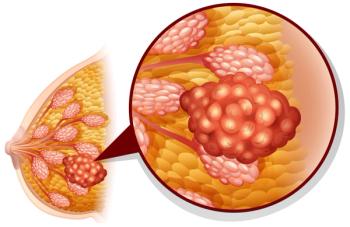
Miami Breast Cancer Conference® Abstracts Supplement
- 42nd Annual Miami Breast Cancer Conference® - Abstracts
- Volume 39
- Issue 4
- Pages: 11-12
20 Impact of Ribociclib Dose Reduction on Efficacy in Patients With Hormone Receptor-Positive/Human Epidermal Growth Factor Receptor 2-Negative Early Breast
Background
The NATALEE trial showed statistically significant and clinically meaningful invasive disease-free survival (iDFS) with ribociclib plus a nonsteroidal aromatase inhibitor (NSAI) vs NSAI in patients with stage II/III hormone receptor–positive (HR+)/HER2-negative (HER2–) early breast cancer (EBC; HR, 0.715; 95% CI, 0.609-0.840; 4-year absolute benefit, 4.9%; median follow-up, 44.2 months). We present an exploratory analysis of efficacy in patients with and without dose reduction.
Materials and Methods
Men and pre- and postmenopausal women with HR+/HER2− EBC were randomized 1:1 to receive ribociclib (400 mg/day; 3 wks on/1 week off for 36 months) plus NSAI or NSAI alone. Key inclusion criteria were stage II/III disease (AJCC 8th edition); patients with node-negative stage IIA disease (T2N0) were required to have additional high-risk criteria (grade 2 with Ki-67 ≥ 20% or high genomic risk; or grade 3). Only 1 ribociclib dose reduction (400 mg/day to 200 mg/day) was allowed for the management of adverse effects (AEs). Relative dose intensity (RDI; actual cumulative dose per duration of exposure [adjusted for 3-weeks-on/1-week-off schedule] divided by planned dose intensity of 400 mg/day) was analyzed by grouping patients into low, medium, or high RDI tertiles and summarized using Kaplan Meier methods. A stratified Cox proportional hazards model was used to compare iDFS rates with ribociclib across tertiles. The data cutoff date was Apr 29, 2024 (median follow-up, 44.2 mo).
Results
Among 2526 patients who received treatment in the ribociclib plus NSAI arm, 27.2% had a ribociclib dose reduction, and 72.8% did not. The median time for the dose reduction was 3.3 months. The most common reason for dose reduction was an AE (23.0%); the most common AEs leading to dose reduction included neutropenia (14.0%), alanine aminotransferase increased (1.9%), and fatigue (1.0%). Baseline characteristics were balanced. Duration of ribociclib exposure was similar among patients with and without a dose reduction (median, 35.7 months in both groups). RDI did not impact iDFS rates. Patients with low, medium, and high RDI had similar iDFS rates.
Conclusion
This post hoc exploratory analysis of NATALEE demonstrated that iDFS benefit was maintained among patients who had a dose reduction of RIB and were not impacted by ribociclib RDI. These data suggest it may be possible to implement a dose reduction of ribociclib to 200 mg/day when needed to manage AEs without compromising efficacy for patients with HR+/HER2− EBC.
Articles in this issue
Newsletter
Stay up to date on recent advances in the multidisciplinary approach to cancer.





